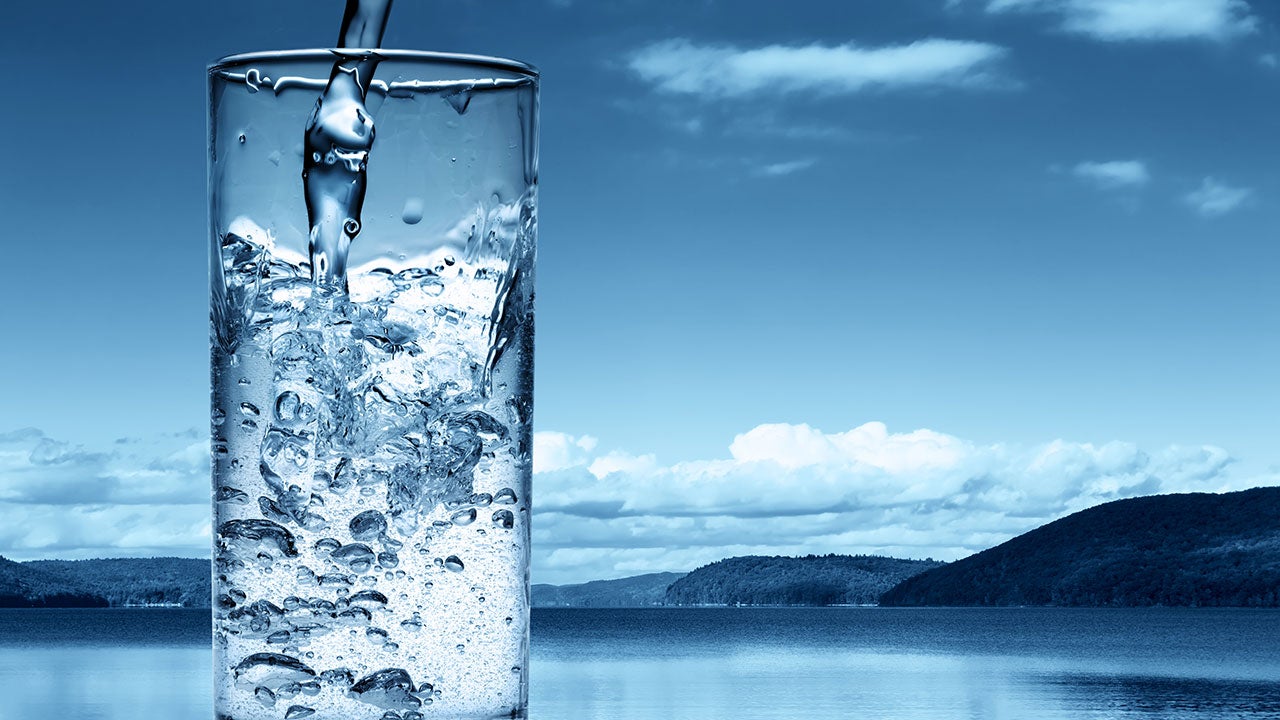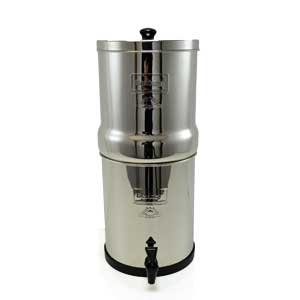
What’s In Your Water?
If you are drinking tap water, the answer to that question is 300+ chemicals and pollutants, according to research from the Environmental Working Group. Among these contaminants are:
- Volatile Organic Chemicals (VOCs) such as pesticides, herbicides and other chemicals. These chemicals are found in most municipal water sources and even in well and other sources due to agricultural run-off and contamination. Research links certain VOCs to damage in the reproductive system, liver, kidneys and more.
- Heavy Metals like lead and mercury are found in some water sources and have been linked to any health problems.
- Endocrine Disrupting Chemicals are chemicals that may mimic or interfere with the normal hormones in the body and these chemicals are being found in increasing amounts in the water supply. They have been linked in studies to various types of cancers. These chemicals are known to affect animals when they enter the water supply as well.
- Fluoride: Is purposefully added to the water and there is much heated debate about the benefits/harm of this. If fluoride has any benefit, it would be directly to the teeth, as drinking the fluoride has not been statistically shown to increase oral health at all. Additionally, fluoride has been linked to thyroid problems and other disorders when consumed internally.
- Pharmaceutical Drugs: Those medications that are taken and expelled through body fluids and also that are expired and flushed down the toilets are also in your water supply. The molecules are often very small and a certain amount is allowed to pass in our water supply and is unable to be filtered out at treatment facilities.
Bottled Water:
Bottled water has started falling out of favor lately and with good reason. Mark’s Daily Apple did an in-depth analysis of why, but bottled water is not a good option for several reasons:
- Chemicals from the plastic bottle itself can leech into the water
- In most cases, the water itself is no different than tap water
- Bottled water costs more in many cases that drinking tap water
- Water bottles are a major source of consumer waste each year!
Verdict: Not the best option on price, taste, or health so we only use it when you are on the go all day. We buy spring water only.
Pitcher Water Filters
Pitcher water filters like Brita use Granulated Activated Charcoal to remove some contaminants. They are less expensive than other filter options upfront, but require frequent filling (especially for large families) and cartridge replacement (making them more expensive in the long run). Since the carbon is not solid, it does not remove all toxins though these filters will improve taste.
Pitcher filters will reduce chlorine, but are not effective at removing VOCs, heavy metals, endocrine disruptors or fluoride. This category also includes faucet mount external filters, which use the same technology.
Verdict: Better than nothing, but doesn’t remove the worst offenders and is somewhat costly to use compared to other options.
Reverse Osmosis (RO)
Reverse Osmosis filtration uses a membrane which removes many contaminants from water. It is usually paired with a Granulated Activated Charcoal filter to remove chlorine and many mount under the sink and have a holding tank. The semipermeable membrane separates many contaminates (which usually have a larger particle size that water) from the water and rejects a large amount of water in the process.
The result is a waste of several gallons of water for every gallon filtered and many naturally occurring minerals (including calcium and magnesium) are also removed from the water. It does remove a large amount of contaminants but is not the best option, in my opinion.
Pros: Removes a large amount of contaminants. Many unites are stored under the sink and have a simple spigot over the counter for getting the water. Does reduce arsenic, asbestos and heavy metals. Does remove fluoride.
Cons: Wastes more water than it produces. Does not reduce VOCs or endocrine disruptors or pharmaceuticals. Takes up to an hour to filter one gallon of water and filters need to be replaced regularly. Removes necessary minerals from the water.
Verdict: Certainly better than a lot of options out there and does remove fluoride, but not the best due to its waste of water and costly filters.
Solid Block Carbon Filters
Recognized by the EPA as the best option for removing chemicals like herbicides, pesticides and VOCs. Quality carbon block filters will remove chemicals, pesticides, bacteria, fluoride (with filter attachment), heavy metals, nitrate, nitrites and parasites. Most are gravity based and can safely transform any type of water into safe drinking water including rain water, pond water and even sea water. If you filter all those types of water they will make your filters not last as long though lol. It will even filter water with food coloring to create clear water.
This is the option that we use now and my only complaint is that it does take up counter space. The advantages are that it is gravity based and will work even without electricity or running water. While these types of units can be more pricey that pitcher filters or other filters up front, they seem to be the least expensive in the long run and require the fewest filter replacements. These types of filters also don’t remove naturally occurring minerals from the water, making it the best tasting filtered water option, in my opinion.
The most common type of this filter is the Berkey and it comes in many sizes for different uses. It can even be used camping to filter river water for drinking!
Pros: Filters VOCs, heavy metals, chlorine, fluoride, nitrates/ites, bacteria, parasites and other chemicals. Very inexpensive per gallon cost and infrequent filter replacement. Great tasting water. Doesn’t require electricity or water pressure to work. Portable options can even be used while traveling.
Cons: Does require counter space and does have to be manually filled (not a big deal for us, we just fill at night and we have plenty of water the next day). More expensive up front.
Verdict: This is what we are using now. We ordered the Big Berkey off Amazon for Christmas with the arsenic and fluoride filters in a set all together with the carbon blocks. It holds a little over 2 gallons of water in the tank. It is simple and easy to use and everyone that has tasted the water are amazed and refill their bottles every time they come over. We have also created two water snob children who say that water when we got out places tastes like a swimming pool. We are excited to take it to the beach with us this year and save some $ on buying a bunch of jugs and bottles of water all week. (water at the beach just tastes weird like sulfur lol).
 |
| This is the one we use called the Big Berkey |
Other Notes:
- UV Filters which does kill bacteria and parasites but does not reduce other types of contaminants and is not feasible for home use.
- Water softeners which add sodium to the water to reduce calcium and magnesium (thus “softening”) but does not filter or remove contaminants.
- Ceramic filters which do remove some contaminants but which are in many cases comparable on price to block carbon filters and which do not remove as many contaminants.

Those are some very good pointers about different types of processed water. It would be great for us to know what the water we drink contain, so we can weigh which is better. Thanks for sharing this with us. Have a great day!
ReplyDeleteVerna Griffin @ AXEON Water Technologies